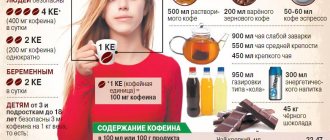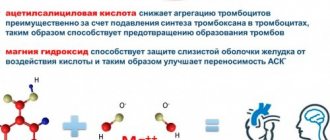Hypercholesterolemia and atherosclerosis
Lipophilic alcohol, cholesterol (cholesterol) is one of the most important elements of biochemical processes in the body. As part of cell membranes, it protects cells from negative temperature effects, participates in the synthesis of steroid and sex hormones, the production of bile acids, supports interneuron connections, and helps the body absorb fat-soluble vitamins.
Endogenous cholesterol is produced by hepatocytes (liver cells); it accounts for 80% of the total volume. The rest is exogenous cholesterol, obtained by the body from animal fats consumed in food. Hypercholesterolemia is the result of a failure of lipid (fat) metabolism. In most cases, the disorder is caused by an unhealthy passion for fatty and sweet foods against a background of physical inactivity.
After cholesterol is absorbed into the blood, it combines with proteins, forming lipoproteins of different densities. Low and very low density lipoproteins (LDL and VLDL) are responsible for delivering fats to body tissues. They are commonly called “bad cholesterol”. High-density lipoproteins (HDL or “good” cholesterol) transport excess LDL and VLDL to the liver for processing and excretion from the body.
When the amount of low-density lipoproteins exceeds the norm, they settle on the epithelium (the inner wall of arteries and capillaries), clinging to microcracks. Thus, cholesterol plaques are formed. Normalization of lipid metabolism is achieved by adjusting the diet and taking special medications.
Information: Damage to the epithelium is caused by alcohol and nicotine addiction, hypertension, intoxication, chronic endocrine and hemolytic pathologies, and hypovitaminosis.
Foods containing cholesterol
As you understand, it is not possible to list all the food products that contain cholesterol, because there are hundreds and even thousands of them (according to the types of living creatures used for food). Therefore, we propose to highlight several of the most popular food groups that contain cholesterol...
Products containing cholesterol (Table 1)
| Product | Cholesterol content (mg/100 g) |
| Cholesterol in meat and offal | |
| Pig meat (pig meat) | 40 |
| Pork | 60-70 |
| Beef and veal | 70-100 |
| Mutton | 70 |
| horsemeat | 50-60 |
| Rabbit meat (rabbit meat) | 40 |
| Brain | 770-2300 |
| Beef by-products (liver, kidneys, heart) | 140-300 |
| Pork by-products (liver, kidneys, heart) | 120-200 |
| Boiled sausage (Doctorskaya, Milk) | 50 |
| Pork sausages | 70 |
| Sausages | 50 |
| Cholesterol in eggs and poultry | |
| Chicken | 40-80 |
| Goose | 100-110 |
| Duck | 40-60 |
| Turkey | 130-210 |
| Chicken (broiler) | 60-70 |
| Chicken egg | 570 |
| Quail egg | 600 |
| Egg yolk | 1000-1100 |
| Cholesterol in fish and seafood | |
| Fatty fish (halibut, carp, capelin, pink salmon, salmon, mackerel, herring, sturgeon, herring, sprat, eel) | 45-140 |
| Lean fish (tuna, perch, pike, crucian carp, pike perch, blue whiting, smelt) | 40-70 |
| Fish caviar | 250-450 |
| Squid meat | 85 |
| Mussels | 40 |
| Oysters | 50 |
| Crabs, crayfish, shrimp | 90-210 |
| Octopuses | 50 |
| Cholesterol in animal fats | |
| Butter (depending on fat content) | 140-190 |
| Pork, beef fat | 100-120 |
| Fish fat | 570 |
| Chicken fat | 95 |
| Cholesterol in dairy products | |
| Cheese, including processed cheese (depending on fat content) | 50-120 |
| Sour cream (10-30% fat content) | 30-140 |
| Cream (10-35% fat) | 30-140 |
| Milk, kefir, yogurt | to 10 |
| Condensed milk | 30-40 |
| Cottage cheese (2-18% fat) | 7-60 |
| Glazed cheese curds | 10-60 |
Please note that the amount of cholesterol in food products depends mainly on their fat content. The higher the fat content, the more cholesterol, and vice versa.
On top of that, you may have already noticed that Table 1 contains only animal products. The reason for this “discrimination” is simple - animal products contain cholesterol, but plant products do not.
However, it should be borne in mind that cholesterol in the blood increases not only from foods rich in cholesterol. Its amount in the body also increases because certain types of substances (toxins, free radicals, etc.) damage the tissues and arteries of the body, thereby stimulating increased cholesterol synthesis in the human liver. In this regard, we recommend eating less trans fats, which are contained in most margarines, in foods fried in oil, sausages and industrial baked goods (especially cookies), and also try to reduce the proportion of fried, high-protein and other foods in your diet. which contain elements harmful to the body.
On the other hand, on the contrary, among animal products there are those that help remove cholesterol from the body. The same applies to plant products, most of which are quite effective and quickly reduce cholesterol in human blood.
About cow's milk
Milk is considered not just a drink, but a complete food product. The volume of milk fat in its composition is interconnected with the amount of protein and cholesterol. The lower the fat content of the product, the lower the percentage of proteins and cholesterol. Proteins in milk are casein, albumin, globulin, which contain almost all essential amino acids:
| Amino acid | What is he responsible for? |
| tryptophan | psycho-emotional state |
| lysine | musculoskeletal system health |
| methionine | liver functions |
| histidine | metabolic reactions |
| leucine | protein-carbohydrate metabolism |
Milk protein is quickly broken down by digestive enzymes and is absorbed by 95%. Milk contains potassium, which is necessary for stable heart function - 150 mg per 100 g. Slightly less calcium (125 mg/100 g) and phosphorus (95 mg/100 g), the correlation of which ensures the strength of bones and teeth.
Vitamin and mineral value of milk
| Vitamins | Microelements | Macronutrients |
| retinol (A) | zinc | sodium |
| tocopherol (E) | manganese | magnesium |
| thiamine (B1) | iron | |
| riboflavin (B2) | selenium | |
| ergocalciferol (D) | ||
| pantothenic acid (B5) | ||
| pyridoxine (B6) | ||
| cyanocobalamin (B12) |
Milk has a low glycemic index of 38 units. The main carbohydrate in the composition is milk sugar (lactose) - food for beneficial lactobacilli, which maintain the balance of intestinal microflora. The energy value of the product (as well as the cholesterol content) depends on the fat content.
Even with hypercholesterolemia, you cannot completely give up animal fats. The diet limits, but does not exclude their use. Some of the lipids allowed in the diet come from dairy products, which contain many healthy components.
We select a quality product in the store
In order for a product to bring maximum benefit and pleasure, it should be chosen correctly. It is better to purchase fish in large stores, where they can provide a certificate.
The chilled version is preferable, as you can ensure its freshness. For frozen fish, expiration dates should be indicated on the packaging; there should not be a lot of ice in the bag, this may indicate repeated freezing.
Some rules for choosing chilled fish:
- Buying medium-sized carcasses indicates the “youth” of the fish.
- The surface of the fish should be smooth, without ulcers or plaque.
- When you press on the pulp, it should return to its original appearance in a few seconds. Otherwise, it's an old copy.
- The smell of a fresh product is not sharp, subtle, which indicates its freshness.
At home, store fish for no longer than 2 days in the refrigerator or up to 2 months in the freezer.
Types of milk
The assortment of supermarkets is represented by cow's milk:
- ultra-pasteurized (temperature treatment 110 °C);
- pasteurized (90 °C);
- sterilized (135 °C under pressure).
The fat content of all types varies from 0.1 to 6%. Fattier varieties are sheep and goat milk. As well as rare fatty varieties - deer and buffalo.
The ratio of calories, fat content and cholesterol in cow's milk
| Fat (%) | 0,1 | 1,0 | 2,5 | 3,2 | 6,0 |
| Kcal/100 g | 31 | 41 | 52 | 58 | 83,5 |
| Cholesterol mg/100 g | 0,5-1,0 | 3,2-3,4 | 9,0-10,0 | 11,0-14,4 | 23,3-24,0 |
Fatty varieties
| Name | goat | sheep | buffalo | deer |
| Fat content % | 4,1/6,2 | 7,1 | 8,1 | 23,2 |
| Kcal/100 g | 68/84 | 110 | 106 | 272 |
| Cholesterol mg/100 g | 11/30 | 39 | 42 | 88 |
Despite the higher cholesterol content in goat's milk, it is considered healthier than cow's milk. This is explained by its unique composition - a large amount of organic acids and a tiny dose of lactose. Goat milk has detoxifying properties. It cleanses the body of breakdown products, heavy metals, toxins, and helps move LDL to the liver.
Skim milk is a dietary product, but along with the fat component, valuable components are practically removed from it. This drink does neither harm nor good. Separately, condensed milk should be noted. The product has high values:
- calorie content – 320 kcal/100 g;
- glycemic index – 61 units;
- carbohydrates – 54.4%;
- fat – 8.7%;
- cholesterol – 30 mg/100 g.
The combination of sugar and fat is converted into LDL, so if you have hypercholesterolemia, condensed milk should be excluded from your diet.
Additionally
Today, drinks made from plant ingredients that resemble milk in appearance and taste have become extremely popular. They are made:
- from grains and legumes: rice, oatmeal, soybean, buckwheat, etc.;
- from nuts: almond, pine, coconut, etc.;
- from seeds: sesame, hemp, etc.
The drinks do not contain cholesterol, but are also free of casein and lactose.
You can drink milk if you have hypercholesterolemia, but you should control the amount of cholesterol in other foods that are included in your diet.
Possible harm and contraindications
Despite the enormous benefits of fish, it can be harmful. The fact is that freshwater and marine life tend to accumulate harmful chemicals from water. Salmon and tuna are especially likely to accumulate lead, arsenic and other heavy metals.
Some species (sturgeon, trout) are raised in special farms. Unscrupulous manufacturers use various additives to add color and increase the size of carcasses.
It is strictly contraindicated to eat this product in its raw form, especially for pregnant women and small children. Parasites are often invisible to the human eye, but cause enormous harm to the body.
It is also prohibited to eat:
- unfamiliar fish species;
- caught in “suspicious bodies of water”;
- sold in unauthorized places without appropriate documents (on the street), since it is unknown where and when the fish were caught;
- carcasses with external damage, ulcers, unhealthy plaque, and unpleasant odor.
Daily cholesterol value
The safe amount of exogenous cholesterol per day for people with normal blood composition and without vascular pathologies is about 300-400 mg. If you have high cholesterol, it is recommended to reduce the daily portion by half. With atherosclerotic changes in the arteries - three times.
Reference: The upper limit of laboratory indicators of cholesterol in the blood is 5.5 mmol/l, the lower limit is 3.1 mmol/l.
If the concentration of cholesterol in the blood is normal, you should not try to reduce its values. Deficiency is no less dangerous to health than excess. Hypocholesterolemia leads to the destruction of cell membranes, metabolic failure, vitamin D hypovitaminosis, suppression of libido, dysfunction of the central and autonomic nervous system.
Beneficial features
Fish is one of the healthiest foods for humans. Dishes made from high-quality sea fish fill the body with easily digestible protein compounds.
Effects of fish on the body:
- Corrects the functioning of the thyroid gland and the activity of the adrenal glands;
- Controls the functioning of the endocrine system;
- Calms the nervous system and restores all its centers;
- Increases emotional mood;
- Memory improves and intellectual abilities increase;
- Sleep becomes stable;
- Metabolic processes in the body return to normal and metabolism is restored.
With an increased cholesterol index, fish dishes reduce the low molecular density lipoprotein index and prevent the development of such serious pathologies:
- Pathology thrombosis or thromboembolism;
- Hypertonic disease;
- Systemic atherosclerosis;
- Rapid heartbeat - tachycardia;
- Heart rhythm disturbance - arrhythmia;
- Ischemia of the cardiac organ - angina pectoris;
- Myocardial infarction;
- Brain stroke of ischemic or hemorrhagic type.
Prevents the development of tachycardia
Daily portion of milk
According to WHO standards, an adult can drink 1000 ml of cow's milk with a fat content of 2.5% per day.
This serving contains 25% calcium, 22% vitamin B2, 21% vitamin D, 18% phosphorus, 13.5% protein, about 25-30% cholesterol (daily value). When compiling a daily menu, all foods containing cholesterol are taken into account.
If you drink a liter of milk (2.5%) daily, you must ensure that the total amount of lipophilic alcohol in the rest of your food does not exceed 70%.
It turns out that other products of animal origin account for: 200-300 mg of cholesterol for a healthy person, 100-150 mg for hypercholesterolemia, 70-100 mg for patients with atherosclerosis.
Omega 3 content in fish
The benefits of fish lie mainly in their high Omega-3 content. This substance is not synthesized by the body, so it can only be obtained from food. The daily requirement for this substance is 250-300 mg.
Omega-3 content in different varieties:
| Variety | Amount of Omega-3 mg/100g | Daily value of product, grams |
| Salmon | 213 | 80 |
| Fresh tuna | 150 | 300 |
| Mackerel | 190 | 200 |
| Herring | 220 | 100 |
| Carp | 110 | 220 |
| Flounder | 50 | 250 |
| Cod | 30 | 330-500 |
| Salmon | 130 | 200 |
| Sea trout | 117 | 200 |
| Sardine | 190 | 180 |
| Som | 20 | 500 |
| Halibut | 120 | 200 |
Rules of use
When purchasing bottled milk, it must be boiled. This will protect the drink from the possible presence of pathogenic microorganisms. Packaged and bottled milk that has been factory sterilized does not need to be boiled.
The body best digests and absorbs milk fat in the first half of the day. Therefore, it is recommended to consume milk during breakfast or lunch. Milk is one of the foods that does not go well with any other food. It is better to drink it separately.
How to Drink Milk with High LDL Levels
You should not completely exclude milk from your diet, but it is also undesirable to abuse it. If LDL levels are elevated, high-fat whole milk is contraindicated. To reduce the calorie content of whole milk, as well as reduce the content of harmful substances in it, you can dilute it with water. If you follow an anti-cholesterol diet, the fat content of consumed milk should not be more than 2%.
An adult engaged in a certain professional activity can drink 3 glasses of a low-fat drink per day. Exceeding this amount will not provide any benefit, since the excess will not be absorbed. Moreover, as people age, their ability to digest milk sugar decreases, so symptoms such as diarrhea, bloating and heartburn are common. The norm for older people is 1.5 glasses per day.
Increasing or decreasing this dose depends on the level of LDL in the blood. It is best to drink milk on an empty stomach about 30 minutes before eating your main meal. Milk added to coffee softens its invigorating effect. As for the time of drinking milk, it is better to leave it for lunch or second breakfast. If you drink it for the first breakfast, there is a high probability that it will not be completely absorbed.
So, with high or moderately elevated cholesterol levels, there is no strict need to give up dairy products. This is important for those who are puzzled by the question: should we drink cow's milk or not. But you need to choose the one that contains less fat. Preference should be given to 1% kefir, 5% cottage cheese, low-fat sour cream and natural yogurt. Low-fat milk contains the same nutrients, but less low-density lipoproteins.
Fermented milk drinks
When cholesterol levels in the blood increase, fermented milk drinks with low fat content are recommended - kefir, yogurt, drinking yogurt (without fruit additives). Not only will they not harm your health, but they will also help remove excess LDL from the body.
The beneficial properties of fermented milk drinks include:
- maintaining the balance of intestinal microflora;
- prevention of obstipation (constipation);
- weight loss;
- cleansing of toxic waste;
- maintaining the functioning of hepatocytes and pancreatic cells.
The cholesterol component and energy value of drinks depends on the initial fat content:
| Fat % | Squirrels | Carbohydrates | Kcal/100 g | Cholesterol in mg/100 g |
| 1 | 2,8 | 4,0 | 40 | 6 |
| 2,5 | 2,9 | 4,0 | 53 | about 8 |
| 3,2 | 2,9 | 4,1 | 56 | 10 |
Nutritionists recommend drinking a glass of kefir or yogurt every night at night (1-1.5 before bedtime).
The benefits of fish oil for atherosclerosis
Everyone knows about the benefits of fish oil. Now it is produced in capsules, which makes the supplement convenient for adults and children to take.
Fish oil is indicated for those who cannot, for some reason, eat fish. Useful properties of the product:
Normalization of heart function.- Cleansing blood vessels from cholesterol plaques.
- Improved metabolism.
- Improved vision.
- Strengthening hair and nails.
- Normalization of bile production.
- Boosting immunity.
When choosing a supplement, you need to pay attention to the content of components such as DHA and EPA. Without them, fish oil is practically useless. The total amount of these acids should be 700 or 100 mg.
Fish is an essential dietary product for patients with high cholesterol. Different varieties contain different amounts of fat and Omega-3. To maximize the benefits from consumption, the product should be selected and prepared correctly.
Results
Cholesterol is of animal origin. It is not found in plants. Milk and its derivatives are animal products, so cholesterol is one of the components of milk lipids.
Milk can be consumed for hypercholesterolemia and atherosclerosis, but it is necessary to monitor the fat content of the product. The higher the fat percentage, the more cholesterol. A safe daily intake is considered to be 1 liter of 2.5% milk per day, provided that fats in the rest of the daily diet are controlled.
Oyster mushrooms for lowering cholesterol
Oyster mushrooms are a variety that is famous for its antitumor and antiatherosclerotic effects. Oyster mushrooms practically do not accumulate negative substances from the environment around them. According to scientific research, if the daily diet contains 1% oyster mushrooms, then harmful blood cholesterol can decrease by almost 10% over time. In addition, this variety is a good prevention of hypertension - the number of hypertensive crises and episodes of exacerbation of hypertension are reduced.
How to eat oyster mushrooms for high cholesterol? These mushrooms are suitable for almost any culinary recipe. Most often for cholesterol pathologies, they are used in dried form for making soups. In addition to oyster mushrooms, you can also add onions, herbs, cabbage, carrots, and durum wheat pasta to the dish.









